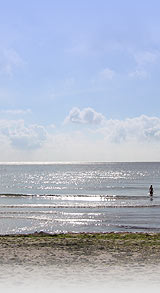 |
|
11 ordspråk av Ray Arvidson
Ray Arvidson
Läs om Ray Arvidson på Google. Hitta foto...
Aantal gezegden is 2307862
varav 1407627 på engelska
Gezegde (2307862 st) Zoek
Categoriën (4590 st) Zoek
Auteurs (212133 st) Zoek
Afbeeldingen (4592 st)
Geboren (10499 st)
Gestorven (3320 st)
Datums (9521 st)
Landen (27876 st)
Idiom (4439 st)
Lengths
Toplists (6 st)
Deze website richt zich op uitdrukkingen in de Zweedse taal, en sommige onderdelen inclusief onderstaande links zijn niet vertaald in het Nederlands. Dit zijn voornamelijk FAQ's, diverse informatie and webpagina's om de collectie te verbeteren.
Här har vi samlat citat sedan 1990!
Vad är gezegde?
Hur funkar det?
Vanliga frågor
Om samlingen
Ordspråkshjältar
Hjälp till!
varav 1407627 på engelska
Gezegde (2307862 st) Zoek
Categoriën (4590 st) Zoek
Auteurs (212133 st) Zoek
Afbeeldingen (4592 st)
Geboren (10499 st)
Gestorven (3320 st)
Datums (9521 st)
Landen (27876 st)
Idiom (4439 st)
Lengths
Toplists (6 st)
Deze website richt zich op uitdrukkingen in de Zweedse taal, en sommige onderdelen inclusief onderstaande links zijn niet vertaald in het Nederlands. Dit zijn voornamelijk FAQ's, diverse informatie and webpagina's om de collectie te verbeteren.
Här har vi samlat citat sedan 1990!
Vad är gezegde?
Hur funkar det?
Vanliga frågor
Om samlingen
Ordspråkshjältar
Hjälp till!
 |
Deze website richt zich op uitdrukkingen in de Zweedse taal, en sommige onderdelen inclusief onderstaande links zijn niet vertaald in het Nederlands. Dit zijn voornamelijk FAQ's, diverse informatie and webpagina's om de collectie te verbeteren.
Här har vi samlat citat sedan 1990!
Vad är gezegde?
Hur funkar det?
Vanliga frågor
Om samlingen
Ordspråkshjältar
Hjälp till!
 |
